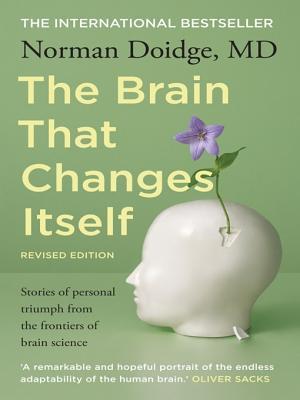More on this book
Community
Kindle Notes & Highlights
Started reading
September 10, 2025
Bogotá,
At the Arrowsmith School this boy’s brain exercises involved tracing complex lines to stimulate his neurons in the weakened premotor area. Barbara has found that tracing exercises improve children in all three areas—speaking, writing, and reading. By the time the boy graduated, he read above grade level and could read for pleasure for the first time. He spoke more spontaneously in longer, fuller sentences, and his writing improved.
She has shown that children with learning disabilities can often go beyond compensations and correct their underlying problem. Like all brain exercise programs, hers work best and most quickly for people with only a few areas of difficulty. But because she has developed exercises for so many brain dysfunctions, she is often able to help children with multiple learning disabilities—children like herself, before she built herself a better brain.
Fast ForWord—have already helped hundreds of thousands. Fast ForWord is disguised
Competitive plasticity in adults even explains some of our limitations. Think of the difficulty most adults have in learning a second language. The conventional view now is that the difficulty arises because the critical period for language learning has ended, leaving us with a brain too rigid to change its structure on a large scale. But the discovery of competitive plasticity suggests there is more to it. As we age, the more we use our native language, the more it comes to dominate our linguistic map space. Thus it is also because our brain is plastic—and because plasticity is
...more
Competitive plasticity also explains why our bad habits are so difficult to break or “unlearn.” Most of us think of the brain as a container and learning as putting something in it. When we try to break a bad habit, we think the solution is to put something new into the container. But when we learn a bad habit, it takes over a brain map, and each time we repeat it, it claims more control of that map and prevents the use of that space for “good” habits.
He mapped a monkey’s hand map in the brain. Then he amputated the monkey’s middle finger. After a number of months he remapped the monkey and found that the brain map for the amputated finger had disappeared and that the maps for the adjacent fingers had grown into the space that had originally mapped for the middle finger. Here was the clearest possible demonstration that brain maps are dynamic, that there is a competition for cortical real estate, and that brain resources are allocated according to the principle of use it or lose it.
Finally, Merzenich discovered that paying close attention is essential to long-term plastic change. In numerous experiments he found that lasting changes occurred only when his monkeys paid close attention.
The opening scans showed that the children used different parts of their brains for reading than normal children do.
“Willy’s main problem was hearing the speech of others clearly,” his mother explains. “I might say the word ‘copy,’ and he would think I said ‘coffee.’ If there was any background noise, it was especially hard for him to hear. Kindergarten was depressing. You could see his insecurity. He got into nervous habits like chewing on his clothes, or his sleeve, because everybody else was getting the answer right, and he wasn’t. The teacher had actually talked about holding him back in first grade.” Willy had trouble reading, both to himself and aloud.
Finally, they are working on “gross motor control,” a function that declines as we age, leading to loss of balance, the tendency to fall, and difficulties with mobility. Aside from the failure of vestibular processing, this decline is caused by the decrease in sensory feedback from our feet. According to Merzenich, shoes, worn for decades, limit the sensory feedback from our feet to our brain. If we went barefoot, our brains would receive many different kinds of input as we went over uneven surfaces. Shoes are a relatively flat platform that spreads out the stimuli, and the surfaces we walk on
...more
This is profound - needs to be explored urgently. Shoes are becoming thicker and thicker. If Normas hypothesis is correct we will have peripheral neuropathy in increasingly greater numbers as we age.
He has been working on developing a mental eraser that can eliminate a problematic brain map. This technique could be of great use for people who have post-traumatic flashbacks, recurring obsessional thoughts, phobias, or problematic mental associations. Of course, its potential for abuse is chilling.
Brain scans of OCD patients show that all three brain areas are hyperactive. The orbital frontal cortex and the cingulate turn on and stay on as though locked in the “on position” together—one reason that Schwartz calls OCD “brain lock.” Because the caudate doesn’t “shift the gear” automatically, the orbital frontal cortex and the cingulate continue to fire off their signals, increasing the mistake feeling and the anxiety. Because the person has already corrected the mistake, these are, of course, false alarms. The malfunctioning caudate is probably overactive because it is stuck and is still
...more


